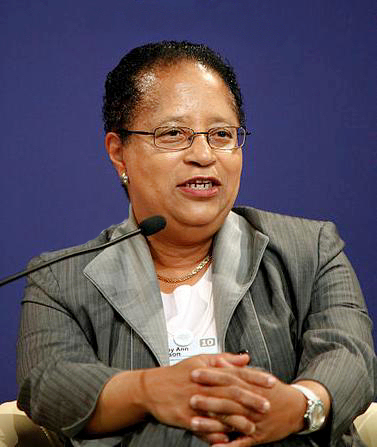 |
| Dr. Shirley Ann Jackson |
If you are an educator and you are not an expert on the history of science, do not worry. I have compiled a list for you of 10 African American scientists, inventors, and explorers that you can easily add to your curriculum. The reason why I chose just 10 is because (as I have found out through trial and error) young people generally do not have a large enough attention span to handle any more information than this. I also want to issue a challenge to you: please do not just teach about the contributions of American Americans during the month of February. Black history is American History and needs to be taught and celebrated as part of your normal curriculum.
- Dr. Shirley Ann Jackson (b. 1946) is a nuclear physicist and the 18th president of Rensselaer Polytechnic Institute. She attained her doctorate from MIT (where she was the first black woman to do so) and has served on many advisory boards including President Clinton's Nuclear Regulatory Commission and President Obama's Council of Advisors on Science and Technology. Her research interests focus on fundamental particles, especially neutrinos.
- Dr. Daniel Hale Williams (1858-1931) was a surgeon and cardiologist. He was the second person to repair the torn pericardium of a knife wound and the first American to perform a successful open-heart surgery. He also founded Providential Hospital (which was the first desegregated hospital in the United States) and was the first black charter member of the American College of Surgeons.
- Mr. Matthew Henson (1866-1955) was a famous explorer and associate of Robert Peary. While he was an exceptional seaman, Mr. Henson is mostly noted for his expedition to the North Pole in 1909. On this voyage, he became the first person to reach the geographic North Pole. Later in his life, Mr. Henson was awarded a silver medal and recognized by presidents Truman and Eisenhower for his incredible achievement.
- Dr. Percy Lavon Julian (1899-1975) was a chemist who focused on the chemical synthesis of medicine from plants. He is most notable for his synthesizing of physostigmine and his pioneering work in the industrial large scale synthesizing of hormones, steroids, testosterone, and progesterone. His work would laid the foundation for the production of cortisone and birth control pills.
- Dr. J. Ernest Wilkins Jr.(1923-2011) was a nuclear physicist and mathematician. He is remembered in part because he started the University of Chicago at the ago of 13 and achieved a doctorate by the age of 19. After this, he worked on the Manhattan Project under the tutelage of Enrico Fermi. Throughout his life, he made many contributions to calculus, engineering and nuclear physics, he served as president of the American Nuclear Society, and was the second African American to be elected to the National Academy of Engineering. .
- Dr. Mae Jemison (b. 1956) is a physician and retired astronaut. Despite her excellent record as as a medical doctor, Dr. Jemison's greatest accomplishment is being the first black woman to travel into space. She accomplished this feat on September 12, 1992 when she went into orbit abroad the Space Shuttle Endeavour. Although she is now retired from NASA, she logged 190 1/2 hours in space. She has also appeared on Star Trek: Next Generation.
- Dr. Patricia Bath (b. 1942) is an inventor and ophthalmologist. She was the first woman to serve on the staff of the Jules Stein Eye Institute or to head a post-graduate program in ophthalmology at the UCLA Medical Center. She was also the first black person to serve as a resident in ophthalmology at New York University. Dr. Bath also holds several medical patents, including one for a Laserphaco Probe (which is used to treat cataracts). She also founded the American Institute for the Prevention of Blindness.
- Dr. Samuel Kountz (1930-1981) was a transplant surgeon. He was a pioneer in the field of kidney transplants and performed the first successful kidney transplant between two people who were not identical twins. He was also part of a team that developed a prototype for the Belzer kidney perfusion machine. At the time of his death, Dr. Kountz had performed 500 kidney transplants (which was, at the time, more than anyone in the world).
- Dr. Ida Stephens Owens (b. 1940) is a biochemist, geneticist, and physiologist. A member of the National Institutes of Health, Dr. Owens researches the genetics of detoxification enzymes. Her research has helped scientists gain a much better understanding of how the human body defends itself against poison. She is currently a member of multiple research bodies, including the Section of Genetic Disorders of Drug Metabolism and the National Institute of Child Health and Human Development.
- Dr. David Blackwell (1919-2010) was a statistician, the first African American inducted into the National Academy of the Sciences, and the first black tenured professor at UC Berkeley. He is most known in mathematics for proposing the Blackwell channel and co-discovering the Rao-Blackwell theorem. Dr. Blackwell also made many contributions to game theory and authored one of the first textbooks on Bayesian statistics in the late 1960's.
No comments:
Post a Comment